Keška je obyčejná traditional keš, ALE se zaměřením na zajímavá místa, které se nacházejí v okruhu této keše. Velice doporučuji obejít si úplně všechna zajímavá místa, které jsem označil na mapě. Přeji příjemný odlov!
The cache is a regular traditional cache, BUT with a focus on interesting places that are within the cache's radius. I highly recommend to go around all the interesting places I marked on the map. Have a nice hunt!
---Geografor1
Informace o zajímavých místech / Information about places of interest:
1.) Hrabalova zeď / Hrabal's Wall:
Barevná koláž připomíná život a dílo jednoho z nejslavnějších českých spisovatelů Bohumila Hrabala. Autorkou díla je Tatiana Svatošová. Koláž najdete zdi objektu stanice metra Palmovka v ulici Na Hrázi.
Jsou zde úryvky z Hrabalových nejslavnějších knih, jeho portrét i psací stroj a kočky, které měl spisovatel bydlící v dvorním traktu dnes již nedochovaného domečku číslo 24, obzvlášt rád.
Místo nebylo vybráno náhodou. Právě zde totiž kdysi stával Hrabalův dům, jenž byl před lety při stavbě metra zbourán.
-------------------------------------------------------------------------------------------------------------------------------------------------------------------------------------------------
This colourful collage commemorates the life and work of one of the most famous Czech writers Bohumil Hrabal. The author of the work is Tatiana Svatošová. The collage can be found on the wall of the Palmovka metro station in Na Hrázi Street.
There are excerpts from Hrabal's most famous books, his portrait, typewriter and cats, which the writer, who lived in the courtyard of the now defunct house number 24, was particularly fond of.
The place was not chosen by chance. It was here that Hrabal's house once stood, which was demolished years ago during the construction of the metro.
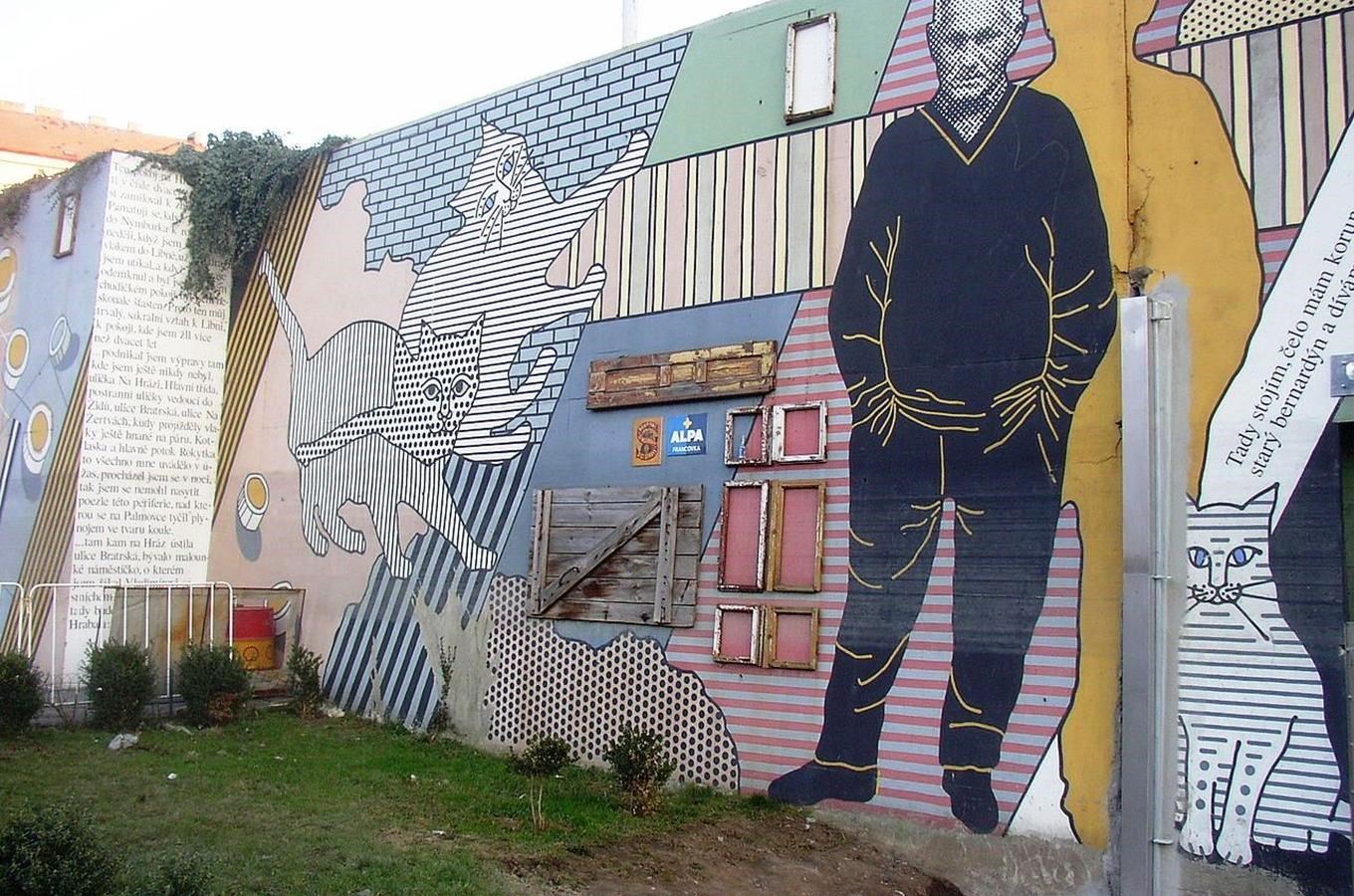
informace jsem čerpal z webové tránky kudyznudy.cz
I drew the information from the website kudyznudy.cz
2.) Nová libeňská synagoga / New synagogue in Libeň:
Nová libeňská synagoga stojí v Praze 8 na křižovatce Palmovka. Dnes je sporadicky využívána ke kulturním účelům, několikrát do roka je využívána členy pražské židovské obce, hlavně Českou unií židovské mládeže, ke svému původnímu účelu, tj. k bohoslužbě, naposledy například oslavu svátku Pesach na jaře 2019/5779.
Vznik Libeňské židovské obce:
Po prohrané válce s Prusy, kdy panovnice Marie Terezie ztratila téměř celé Slezsko, se její zloba obrátila právě proti Židům. Nařkla je z toho, že „měli nepříteli nápomocni býti“ a vydala edikt o vypovězení Židů, nejprve roku 1744 z Prahy, o rok později (1745) i z celých Čech. Vypovězení mělo nabýt účinnosti v pětačtyřiceti dnech, uvádí se, že tehdejší pražské ghetto opustilo za tu dobu přes 10 000 jeho obyvatel, což byla v té době celá čtvrtina obyvatel města. Židé se mohli usadit nejméně 2 hodiny cesty od bran města, tam museli trávit noc a do města mohli pouze přes den; vyřizovat si formality potřebné k vystěhování. Ke skutečnému vypovězení ale nakonec nedošlo, jelikož Praha byla tak závislá na finančních operacích Židů, že po jejich vyhnání naprosto ztratila význam obchodní křižovatky a Marie Terezie byla na nátlak všemožných institucí a stavů (za Židy se přimluvil dokonce i papež) nucena roku 1748 pozvat Židy zpět. Několik desítek rodin však již bylo zabydleno v Libni a tak vzniklo ghetto zde.
---------------------------------------------------------------------------------------------------------------------------------------------------------------------------------------------------
The new Libeň synagogue is located in Prague 8 at the Palmovka intersection. Today, it is sporadically used for cultural purposes, but several times a year it is used by members of the Prague Jewish community, mainly by the Czech Union of Jewish Youth, for its original purpose, i.e. for worship, most recently, for example, to celebrate the Passover holiday in the spring of 2019/5779.
The establishment of the Libeň Jewish Community:
After the lost war with Prussia, when the ruler Maria Theresa lost almost all of Silesia, her anger turned precisely against the Jews. She accused them of "being helpful to the enemy" and issued an edict to expel the Jews, first from Prague in 1744, and a year later (1745) from the whole of Bohemia. The expulsion was to take effect in forty-five days, and it is reported that over 10,000 inhabitants left the Prague ghetto in that time, which was a full quarter of the city's population at the time. The Jews were allowed to settle at least two hours away from the gates of the city, had to spend the night there, and were only allowed to enter the city during the day to complete the formalities necessary for their removal. But the actual expulsion did not take place in the end, as Prague was so dependent on the financial operations of the Jews that after their expulsion it completely lost its importance as a commercial crossroads, and Maria Theresa was forced to invite the Jews back in 1748 under pressure from all sorts of institutions and estates (even the Pope interceded on behalf of the Jews). However, several dozen families had already settled in Libeň and so a ghetto was established there.
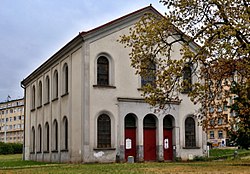
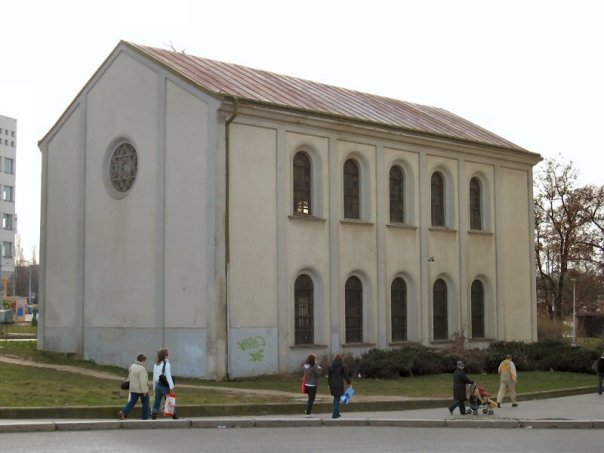
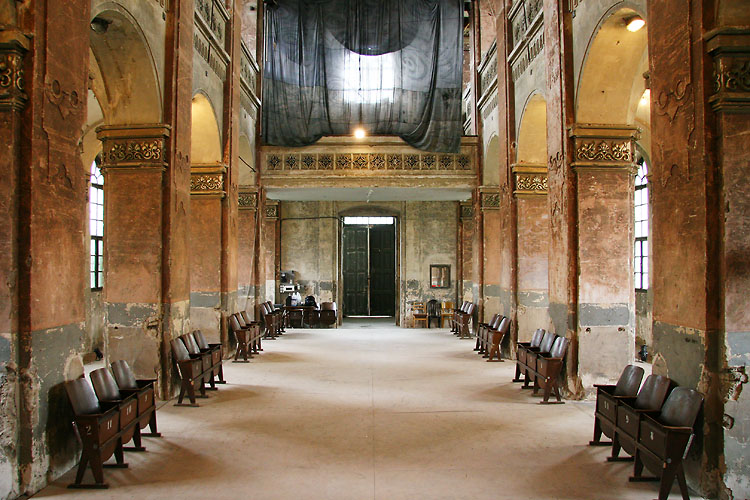
Informace jsem čerpal z webové stránky wikipedia.org.
Information I drew from the wikipedia.org website.
3.) Zasypaný židovský hřbitov / Buried Jewish cemetery:
Hřbitov byl založen zřejmě v 16. století a sloužil svému účelu až do 2. poloviny 19. století. Jižní část byla asanována jako první kvůli stavbě dolního nádraží v Libni už v roce 1875, severní část poškodila stavba nájezdu na libeňský most v 1. polovině 20. století. Zbytek hřbitova byl zlikvidován v 60. letech 20. století – náhrobky byly zasypány a zůstaly jen hřbitovní zdi.
------------------------------------------------------------------------------------------------------------------------------------------------------------------------------------------------
The cemetery was probably founded in the 16th century and served its purpose until the second half of the 19th century. The southern part was the first to be removed due to the construction of the lower station in Libeň as early as 1875, the northern part was damaged by the construction of the Libeň bridge on-ramp in the first half of the 20th century. The rest of the cemetery was destroyed in the 1960s - the tombstones were filled in and only the cemetery walls remained.
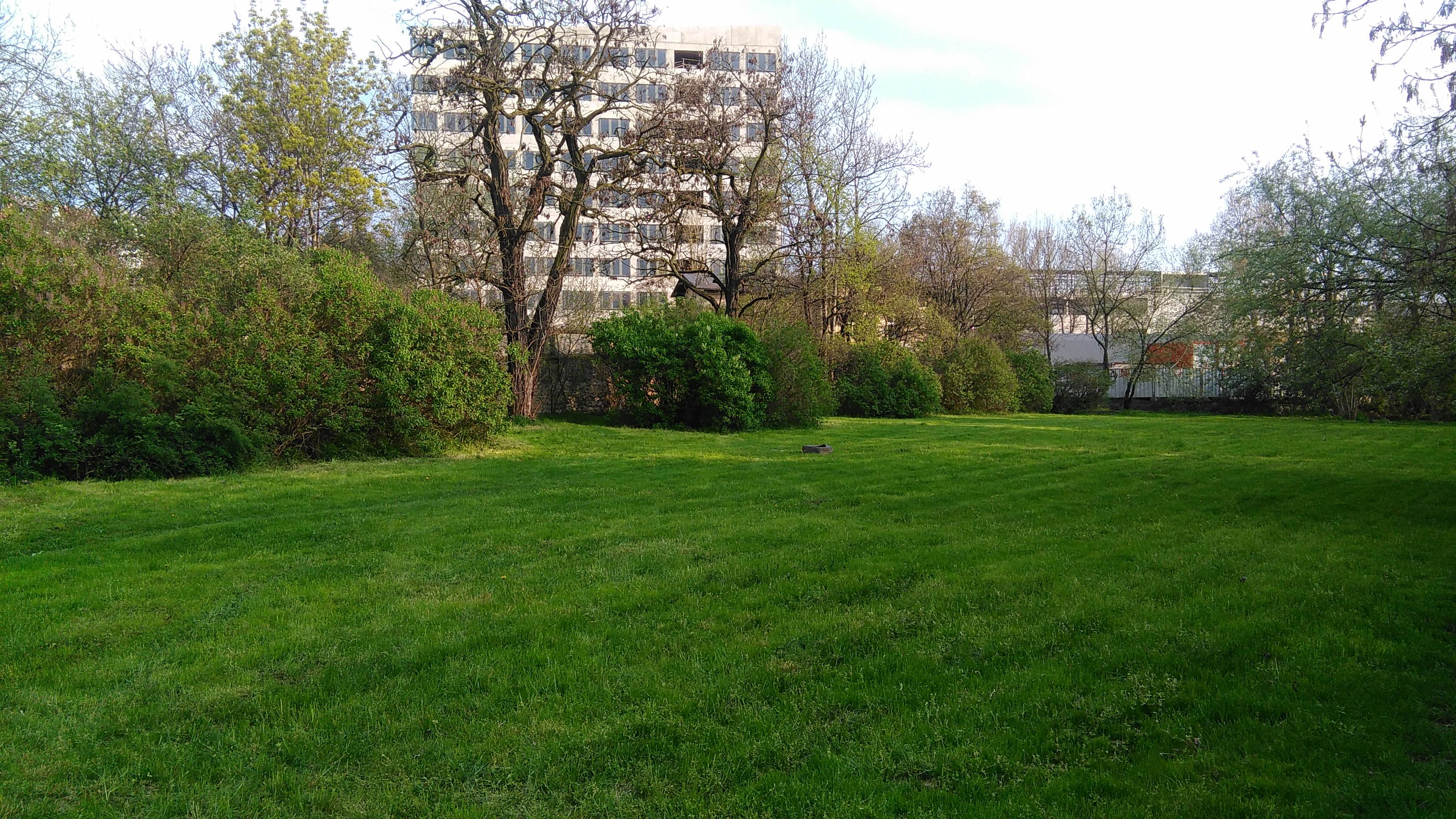
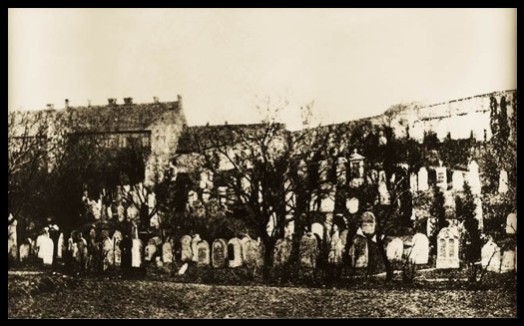
informace jsem čerpal z webové stránky Hrady.cz.
I drew the information from the website Hrady.cz.
4.) Entí Ruka / Ent's Hand:
Fiktivní původ Entů:
Ještě před počátkem Hvězdných věků, když byli stvořeni trpaslíci (viz Aulë), Aulëho manželka Yavanna se zalekla, neboť poznala, že trpaslíci i Ilúvatarovy děti (elfové a lidé) se budou pramálo ohlížet na to, co vytvořila. Předstoupila se svými starostmi před Manwëho a vyslovila přání, aby se stromy staly mluvčími všech olvar (rostlin). Manwë se podivil této myšlence, ale Yavanna mu odpověděla, že přesto byla obsažena v Hudbě, Ainulindalë. Tu Ilúvatar způsobil, že Manwë opět slyšel Hudbu a všiml si i věcí, jež mu dříve unikly. Manwë pak Yavanně vyjevil Ilúvatarův záměr: Až procitnou Děti, přijdou mezi olvar a kelvar duchové a někteří s nimi zůstanou a budou je chránit.
Enti byli vytvořeni jako ochránci olvar, rostlin, které na rozdíl od kelvar, zvířat, neměly možnost se bránit nebezpečí. Proto se entům také říká Pastýři stromů. Enti vynikali vzrůstem a velkou silou, dosahovali výšky kolem pěti metrů a rukama dovedli drtit kámen. Enti pili zvláštní nápoje, po nichž rychle rostli; tohoto nápoje se napili také Smíšek a Pipin a poté výškou převyšovali všechny ostatní hobity.
Enti byli málo známou rasou a mnoho se o nich neví, žili samotářsky a nemíchali se do věcí jiných národů. Nenáviděli skřety a trpaslíky, kteří káceli stromy, a hodně si vážili elfů, kteří se také starali o lesy a probudili v entech touhu mluvit.
-----------------------------------------------------------------------------------------------------------------------------------------------------------------------------------------------
The fictional origin of the Ents:
Even before the beginning of the Star Ages, when the Dwarves were created (see Aulë), Aulë's wife Yavanna was dismayed, recognizing that the Dwarves and Ilúvatar's children (elves and humans) would have little regard for what she had created. She brought her worries before Manwë and expressed her wish that the trees should become the spokesmen of all olvar (plants). Manwë was astonished at this thought, but Yavanna replied that nevertheless it was contained in the Music, Ainulindalë. Here Ilúvatar caused Manwë to hear the Music again, and to notice even things which he had previously missed. Manwë then revealed Ilúvatar's intention to Yavanna: When the Children awaken, spirits will come among the olvar and kelvar, and some will stay with them and protect them.
The Ents were created as protectors of the olvar, the plants, which, unlike the kelvar, the animals, had no way to defend themselves against danger. That is why the Ents are also called the Shepherds of the Trees. The Ents were distinguished by their stature and great strength, reaching heights of around five metres and the ability to crush stone with their hands. The Ents drank a special potion that made them grow quickly; Smiley and Pippin also drank this potion, and afterwards they towered over all the other hobbits in height.
The Ents were a little-known race and not much is known about them; they lived solitary lives and did not meddle in the affairs of other peoples. They hated orcs and dwarves who cut down trees, and had much respect for the elves who also tended the forests and awakened in the Ents a desire to talk.
-------------------------------------------------------------------------------------------------------------------------------------------------------------------------------------------------
O Libeňském Entovi:
Přesný původ tohoto Enta není znám. Celý Ent je ukrytý pod zemý a jediné co z něj vyčuhuje je trojprstá dřevěná ruka. Podle odhadů několika odborníků dosahuje velikost tohoto Enta v podzemí až 20 metrů.
----------------------------------------------------------------------------------------------------------------
About the Libeň Ent:
The exact origin of this Ent is unknown. The entire Ent is hidden underground and the only thing that sticks out is a three-fingered wooden hand. Several experts estimate that the size of this Ent underground is up to 20 meters.
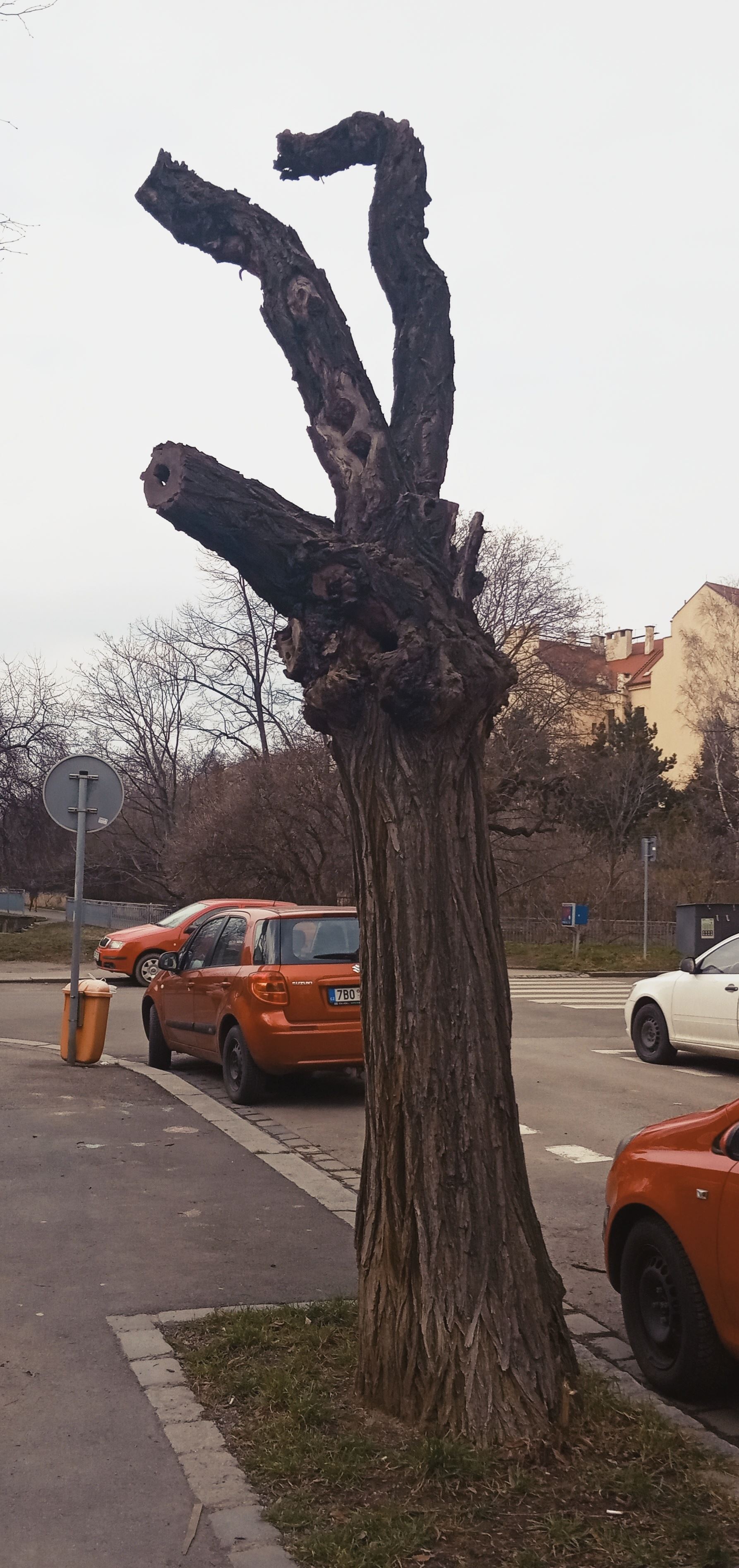
tento text je přetažen z wikipedia.org
this text is extracted from wikipedia.org
5.) Zakopaná lokomotiva / The buried locomotive:
Uprostřed malého travnatého ostrůvku mezi kolejimi se rozprostírá vyšlapaná cestička. Naní leží nebo spíše stojí komín jakési lokomotivy. Tedy abych byl upřímný tento tzv. "komín" je jen obyčejný větrací průduch metra. Ale v chladných dnech (nejlépe za sněhu) se nad tímto průduchem zdvihá pára, takže lze si pod tím představit lokomotivu.
-------------------------------------------------------------------------------------------------------------------------------------------------------------------------------------------------
In the middle of a small grassy island between the tracks is a beaten path. On it lies, or rather stands, the chimney of a locomotive. Well, to be honest, this so-called "chimney" is just an ordinary subway vent. But on cold days (preferably in snow) steam rises above this vent, so one can imagine a locomotive underneath!
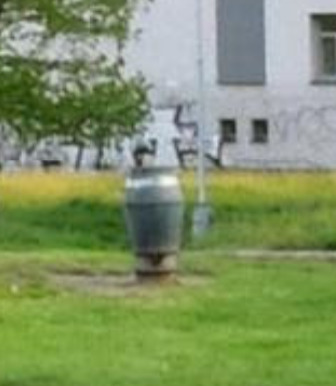
tento text je přetažen z wikipedia.org
this text is extracted from wikipedia.org
6.) Hříbek / Porcini:
Jednoduše jakýsi železný patník, průduch nebo prostě hříbek trčící ze země. Nikdy jsem přesně nezjistil co to je. Když tak kdyby jste to věděli napište mi to prosím do logu!!!
--------------------------------------------------------------------------------------------------------------------------------------------------------------------------------------------------
Simply a kind of iron bollard, a vent or simply a mushroom sticking out of the ground. I never found out exactly what it was. If you do, if you know, please put it in the log!!!
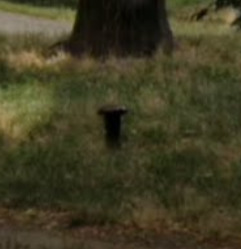
tento text je přetažen z wikipedia.org
this text is extracted from wikipedia.org